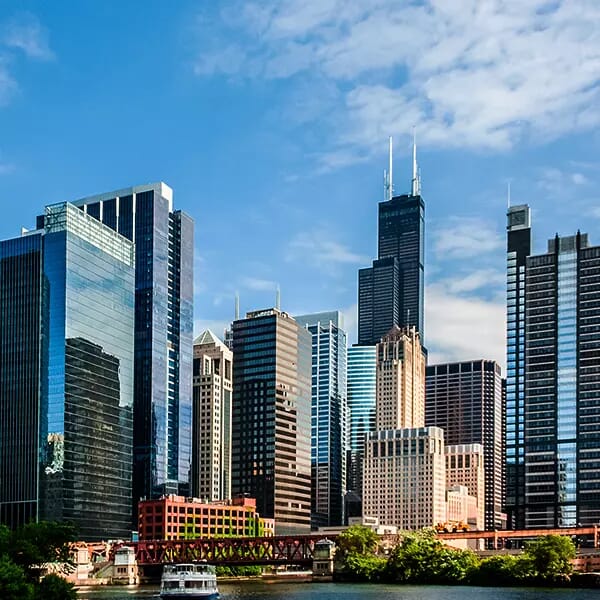 No attribution required
No attribution requiredThe current state of mixed-use and placemaking in Europe
Attendees of a mixed use session at Europe GRI discuss how placemaking looks today
October 14, 2019Real Estate
As we near the end of the 21st century's second decade, it’s clear just how much the way we interact with each other and the world has changed. One could argue that all this technology at our fingertips has made us more demanding of convenience and streamlined experiences in all things. Now we want to work, live, eat, shop and play without having to go too far.
This is why consumers love mixed-use so much. From a developer standpoint, the yields here lie within developing projects in prime locations in order to benefit from existing traffic and cash flow. Today, they are used in the development of secondary areas to help add value to surrounding new residential.
This was the subject of a session at Europe GRI 2019, where over 450 of the world’s most senior names in real estate gather for candid, closed door discussions where all are encouraged to speak freely. Members of a particular session talked at length about how mixed-use assets had become a big part of placemaking, and how the sector was changing as the previously lucrative retail asset is in the stage of transformation.
A big incentive to developers of placemaking is that, especially in cities where location and land prices are even more squeezed, location isn’t driving business. Instead, you bring value to the area. Often, the sure-fire way to evaluate how well a mixed-use placemaking project has done is to measure the value it has brought to the area. This can be quantified by things like caliber of retailers becoming more mainstream and surrounding house prices rising, all the way to crime rates dropping. Retail certainly helps to bring and keep people in the location, but what really makes the money is adding value to the residential projects.
The main problem that mixed-use placemaking projects face is finding the ingredients to make it work. It has to work for both the end-users and the investors. Retail used to be the attraction for consumers as well as investors, especially since brands had located business in a mixed-use development both gained greater exposure to customers and allowed retailers to reduce marketing costs. But now that the retail sector especially in Europe has taken a hit, while developers have explored and evolved the mixed use asset class to implement new forms of tenants such as F&B and leisure focused.
Concluding with the overall health of the asset, it was said that while placemaking can offer great yields, it could take around 10-15 years for a project to complete. This leaves little room for liquidity and leaves the project open to the turn of the cycle and at least 1, if not 2, crunches.
GRI Club is hosting specialised and tailored discussions on offices for the most senior players in the real estate. GRI Offices 2019 take place on 19-20 of November in London.
Article by Matt Harris
This is why consumers love mixed-use so much. From a developer standpoint, the yields here lie within developing projects in prime locations in order to benefit from existing traffic and cash flow. Today, they are used in the development of secondary areas to help add value to surrounding new residential.
This was the subject of a session at Europe GRI 2019, where over 450 of the world’s most senior names in real estate gather for candid, closed door discussions where all are encouraged to speak freely. Members of a particular session talked at length about how mixed-use assets had become a big part of placemaking, and how the sector was changing as the previously lucrative retail asset is in the stage of transformation.
A big incentive to developers of placemaking is that, especially in cities where location and land prices are even more squeezed, location isn’t driving business. Instead, you bring value to the area. Often, the sure-fire way to evaluate how well a mixed-use placemaking project has done is to measure the value it has brought to the area. This can be quantified by things like caliber of retailers becoming more mainstream and surrounding house prices rising, all the way to crime rates dropping. Retail certainly helps to bring and keep people in the location, but what really makes the money is adding value to the residential projects.
The main problem that mixed-use placemaking projects face is finding the ingredients to make it work. It has to work for both the end-users and the investors. Retail used to be the attraction for consumers as well as investors, especially since brands had located business in a mixed-use development both gained greater exposure to customers and allowed retailers to reduce marketing costs. But now that the retail sector especially in Europe has taken a hit, while developers have explored and evolved the mixed use asset class to implement new forms of tenants such as F&B and leisure focused.
Concluding with the overall health of the asset, it was said that while placemaking can offer great yields, it could take around 10-15 years for a project to complete. This leaves little room for liquidity and leaves the project open to the turn of the cycle and at least 1, if not 2, crunches.
GRI Club is hosting specialised and tailored discussions on offices for the most senior players in the real estate. GRI Offices 2019 take place on 19-20 of November in London.
Article by Matt Harris



